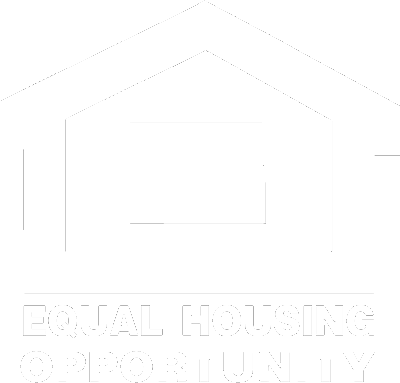11% of metros saw double-digit price increases in 3Q, even though buyers faced a one-year mortgage payment increase of 19.2%. In 2Q, prices rose in only 58% of metros.
WASHINGTON – More than 80% of metro markets (182 out of 221) posted home price gains in the third quarter of 2023 when the 30-year fixed mortgage rate ranged from 6.81% to 7.31%, according to the National Association of Realtors®’ (NAR) latest quarterly report.
In one out of 10 U.S. metro areas (11%), prices rose by double digits, up from 5% in the second quarter.
“Homeowners have accumulated sizable wealth, with a typical homeowner gaining more than $100,000 in overall net worth since 2019 and before the height of the pandemic,” says NAR Chief Economist Lawrence Yun. “However, the persistent lack of available homes on the market will make the dream of homeownership increasingly difficult for younger adults unless housing supply is significantly boosted.”
Year-to-year, the national median single-family existing-home price climbed 2.2% to $406,900. In the previous quarter, the median price declined 2.4%.
Among the major U.S. regions, the South saw the largest share of single-family existing-home sales (46%) in the third quarter, and year-over-year price appreciation of 1.7%. While other regions had fewer sales, however, prices grew 5.3% in the Northeast and 5.2% in the Midwest, though an increase of only 0.6% in the West.
In some larger metros, prices fell year-to-year:
- Austin: Down 10.3%
- Phoenix: Down 1.5%
- Salt Lake City: Down 1.2%
- Dallas: Down 1.1%
- Houston: Down 1.1%
Some of the higher larger-metro price increases were in:
- San Jose: Up 9.6%
- Anaheim: Up 8.7%
- San Diego: Up 8.7%
- Boston: Up 6.6%
- Miami: Up 5.7%
“Following the big price changes during the last several years, it’s natural to witness momentary swings in prices,” Yun says. “Some markets that experienced sizable home price gains since 2020 have turned lower, resulting in temporary relief for prospective homebuyers. Also, a few markets in the West that experienced price declines in the prior quarter have seen prices rise again.”
Top 10 metro areas for largest year-over-year 3Q price increases
- Fond du Lac, Wis.: 18.9%
- Hickory-Lenoir-Morganton, N.C.: 17.1%
- Oshkosh-Neenah, Wis. : 15.2%
- Green Bay, Wis.: 14.8%
- Reading, Pa.: 14.7%
- Newark, N.J.-Pa: 14.3%
- Dayton, Ohio: 13.7%
- Fort Wayne, Ind.: 12.9%
- Farmington, N.M.: 12.7%
- Kankakee, Ill.: 12.6%
Most expensive U.S. markets in 3Q
- San Jose-Sunnyvale-Santa Clara, Calif.: $1,850,000, up 9.6%
- Anaheim-Santa Ana-Irvine, Calif.: $1,305,000, up 8.7%
- San Francisco-Oakland-Hayward, Calif.: $1,300,000, up 1.6%
- Urban Honolulu, Hawaii: $1,061,900, down 5.8%
- San Diego-Carlsbad, Calif.: $978,500, up 8.7%
- Salinas, Calif.: $945,300, up 5.3%
- Oxnard-Thousand Oaks-Ventura, Calif.: $921,500, up 3.8%
- Los Angeles-Long Beach-Glendale, Calif.: $897,600, up 1.4%
- San Luis Obispo-Paso Robles, Calif.: $889,900. up 1.7%
- Boulder, Colo.: $857,800, up 3.7%
“With consumer inflation becoming more manageable, the Federal Reserve needs to consider cutting interest rates,” Yun says. “In turn, Congress must consider incentives to boost housing supply and inventory so that more Americans can participate in wealth accumulation. The housing market shouldn’t be accessible only to those who are paying in cash nor become a playground for the wealthy.”
Less than one-fifth of markets (17% – 38 out of 221) experienced home price declines in the third quarter, down from 41% in the second quarter.
Housing affordability worsened in the third quarter because of increasing home prices and mortgage rates. The monthly mortgage payment on a typical existing single-family home with a 20% down payment was $2,192, up 7% from the second quarter ($2,051) and 19.2% ($354) year-to-year.
Families typically spent 26.8% of their income on mortgage payments, up from 25.3% in the 2Q and 23.5% year-to-year.
In 3Q, first-time buyers continued to face inventory and affordability issues.
For a typical starter home valued at $345,900 with a 10% down payment loan, the monthly mortgage payment rose to $2,149, up 6.9% from the previous quarter ($2,011) – an increase of $343 (19%) year-to-year ($1,806). First-time buyers typically spent 40.4% of their family income on mortgage payments, up from 38.2% in the second quarter.
A family needed a qualifying income of at least $100,000 to afford a 10% down payment mortgage in 45.7% of markets, up from 40.3% in the prior quarter. Yet, a family needed a qualifying income of less than $50,000 to afford a home in 2.7% of markets, down from 6.3% in the previous quarter.
© 2023 Florida Realtors®
©Florida Realtors®
Source link


